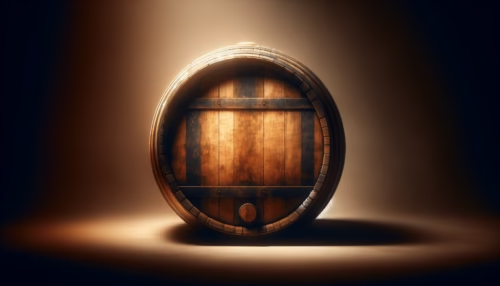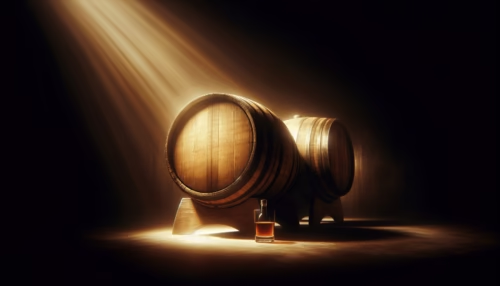What compels so many enthusiasts to delve into the world of premium whiskey investment, and how does one ensure that their prized collection retains its value? Understanding and navigating the nuances of premium whiskey is an art as much as it is an investment strategy. This article unravels the mystique surrounding premium whiskey, offering guidance on its collection, storage, and investment potentials. It aims to equip both burgeoning whiskey aficionados and seasoned investors with the insights necessary for making informed decisions.

Table of Contents
The Historical Allure of Whiskey
Whiskey, with its rich heritage and deep-rooted cultural significance, has been cherished for centuries. Originating from regions like Ireland and Scotland, its production dates back to ancient monastic times when monks perfected the art of distillation. With whiskey, particularly the single malt variety, each bottle tells a story of its geographical origins and the intricate process carried out by the distillers. The historical relevance adds a unique value to whiskey, marking it as a compelling product for collection and investment.
From Grain to Glass: The Whiskey Production Process
Understanding the journey of how a whiskey gets from the field to a collector’s shelf is crucial. Distillation involves grains, water, and yeast. These components are mashed, fermented, distilled, and aged in barrels. The aging process, often lasting decades, allows the whiskey to mature and develop its distinct flavors. The longer it ages, the more valuable it typically becomes, as aging adds character and depth to the spirit. This understanding is a fundamental underpinning of the whiskey investment landscape.
The Emergence of Whiskey as an Investment Vehicle
In recent years, whiskey has emerged as a lucrative investment vehicle. Factors such as rarity, brand prestige, and awards garnered by a specific bottle or distillery drive whiskey’s market value. Rare vintages and limited edition releases often see substantial appreciation over time. The increasing demand from global markets, particularly in Asian countries, has further fueled the investment appeal of this golden elixir. Investors should study market trends and the historical sales data of whiskey to make informed decisions.

Key Concepts in Whiskey Investment
To approach whiskey investment strategically, certain concepts must be clearly understood. The interplay between rarity, demand, and history significantly influences a bottle’s investment potential. Unlike many other asset classes, whiskey can offer substantial returns, sometimes surpassing those from traditional investments.
Factors Influencing Whiskey Value
- Rarity: Limited production bottles from renowned distilleries are prime candidates for investment.
- Age and Condition: Older whiskeys typically command higher prices, but they must be in pristine condition.
- Brand Prestige: Top brands with a storied legacy tend to hold value and appeal.
- Market Trends: The demand for certain types of whiskey fluctuates. Keeping abreast of trends is vital.
The interplay of these factors determines the overall potential of whiskey as an investment. Moreover, transitioning into this field requires both financial acumen and a comprehensive appreciation of the whiskey’s artistry.

Best Practices for Whiskey Storage
Proper whiskey storage is of paramount importance to preserving its quality and ensuring its investment value stays intact. When stored incorrectly, even the most promising bottle may lose its allure and worth.
Ideal Storage Conditions
Whiskey should be stored in a stable environment to preserve its integrity:
- Temperature: Maintain a room temperature of around 15°C to 20°C (59°F to 68°F). Avoid temperature fluctuations as they can expand and contract the cork, leading to oxidation.
- Humidity: A consistent humidity level is pivotal to prevent corks from drying out while avoiding excessive moisture.
- Light: Store bottles away from direct sunlight, which can degrade whiskey over time.
- Position: Unlike wine, store whiskey bottles upright to keep the alcohol from eroding the cork.
Long-Term Care for Collections
For long-term storage, an investment hobbyist might consider bespoke whiskey cabinets or professional storage facilities that offer optimal conditions. Consider insuring your collection as a precaution against unforeseen circumstances such as theft or environmental damage.

Steps to Initiate a Whiskey Collection
Beginning a whiskey collection involves more than a mere acquisition of different labels. It requires careful planning and strategy to ensure both personal and financial satisfaction.
Analyzing Market Opportunities
Start by researching and identifying bottles with high investment potential. Understand auction trends, join whiskey clubs, and engage in forums to glean insights from seasoned collectors. Keeping abreast of industry news is invaluable.
Building a Diverse Portfolio
- Diversification: Like any investment, diversification is key. A mix of both vintage bottles and contemporary limited editions can balance risk and opportunity.
- Brand Exploration: While well-known distilleries offer stability, lesser-known yet highly reputed distilleries can provide high returns.
- Edition Selection: Special editions and commemorative releases can serve as high-value collectibles.
Acquisition and Authentication
When purchasing whiskey, ensure you source it from reputable dealers or auctions to avoid counterfeits. Verification and authentication by professionals add an additional layer of security to your investments.

Maximizing Returns on Whiskey Investments
An investment in whiskey, like any venture, requires strategic thinking for maximization of potential returns. Along with storage and diversity, timing and market acumen are crucial.
Timing the Market
Understanding the right time to buy or sell involves monitoring market conditions and anticipating changes in demand. Whiskey auctions and industry exhibitions can illuminate trends worthy of exploration.
Liquidating Assets
When it comes time to liquidate holdings, options range from private sales to auctions. Evaluate factors such as timing, market conditions, and auction fees for optimal returns. Partnerships with auction houses often provide exposure to a global audience.
Balancing Enjoyment and Investment
While whiskey represents an investment, it also offers an opportunity for personal indulgence. Balancing these aspects ensures the pursuit remains both pleasurable and profitable. Aligning with peers in clubs or tasting events enriches one’s experience and expands their knowledge.
In conclusion, entering the world of premium whiskey collection and investment is a complex yet rewarding endeavor. Through strategic planning, continuous learning, and meticulous storage, one can appreciate not only the aromatic and flavor complexities of whiskey but also its significant investment potential. Enthusiasts equipped with the guidance of this article are well-prepared to explore the intricate tapestry of whiskey investment, balancing both enjoyment and profit.
How to Build a Whiskey Barrel Investment Portfolio for Long-Term Growth

